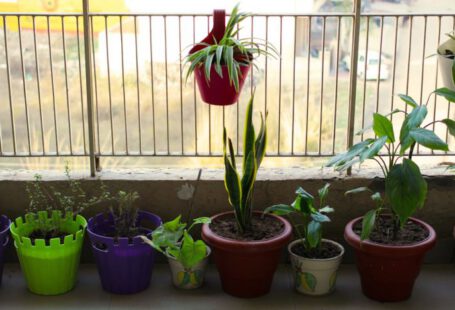Urban spaces are often characterized by concrete jungles, devoid of greenery and nature. However, a growing trend in city landscaping is challenging this notion by incorporating edible plants into the urban environment. This practice, known as edible landscaping, is not only a visually appealing way to green up cities but also serves a functional purpose by providing fresh produce to residents. Can edible landscaping be both beautiful and functional in a city setting? Let’s explore the possibilities of this innovative approach to urban design.
The Beauty of Edible Landscaping
Traditional landscaping in cities often focuses on ornamental plants and flowers for aesthetic appeal. While these plants certainly add beauty to urban spaces, edible landscaping takes it a step further by integrating plants that not only look good but also serve a practical purpose. Imagine walking down a city street lined with fruit trees, herb gardens, and vegetable beds bursting with vibrant colors and textures. Edible landscaping adds a new dimension to urban beauty, creating visually stunning landscapes that are also productive and sustainable.
By incorporating edible plants into cityscapes, urban areas can transform into lush green spaces that not only provide visual delight but also offer a sense of connection to nature. The sight of blooming fruit trees, fragrant herbs, and ripe vegetables can evoke a sense of abundance and vitality in an otherwise concrete-dominated environment. Edible landscaping brings a touch of the countryside to the city, creating a harmonious blend of nature and urban life.
The Functionality of Edible Landscaping
Beyond their beauty, edible plants in city landscapes serve a practical purpose by providing fresh, locally grown produce to urban residents. In a world where food miles and carbon footprints are increasingly important considerations, edible landscaping offers a sustainable solution to urban food production. By growing fruits, vegetables, and herbs in public spaces such as parks, plazas, and roadside planters, cities can reduce their reliance on imported produce and promote self-sufficiency among residents.
Edible landscaping also promotes food security in urban areas by increasing access to fresh, nutritious food. By planting edible plants in communal spaces, cities can empower residents to harvest their own produce, fostering a sense of community and connection to the land. In a time when food deserts and lack of access to healthy food options are pressing issues, edible landscaping offers a practical and impactful solution to urban food insecurity.
Challenges and Considerations
While the concept of edible landscaping in cities is promising, it also presents challenges that need to be addressed. One key consideration is the maintenance and care of edible plants in public spaces. Unlike ornamental plants, edible plants require ongoing attention, watering, and pruning to ensure healthy growth and productivity. Cities must invest in resources and infrastructure to support the maintenance of edible landscapes, including training staff and volunteers in proper horticultural practices.
Another challenge is the potential for vandalism and theft of edible plants in public spaces. Unlike ornamental plants, edible plants are attractive targets for opportunistic individuals looking to harvest fresh produce for personal use. Cities must implement strategies to protect edible landscapes from vandalism, such as installing fences, signage, and engaging community members in the care and stewardship of these valuable resources.
Embracing the Potential of Edible Landscaping in Cities
Despite the challenges, the potential benefits of edible landscaping in city settings are undeniable. By combining beauty and functionality, edible landscapes offer a sustainable and holistic approach to urban design that benefits both the environment and the community. Cities that embrace edible landscaping can create vibrant, productive spaces that not only enhance the visual appeal of urban areas but also promote food security, sustainability, and community engagement. With careful planning, investment, and community involvement, edible landscaping has the power to transform cities into thriving, green oases that nourish both body and soul.





